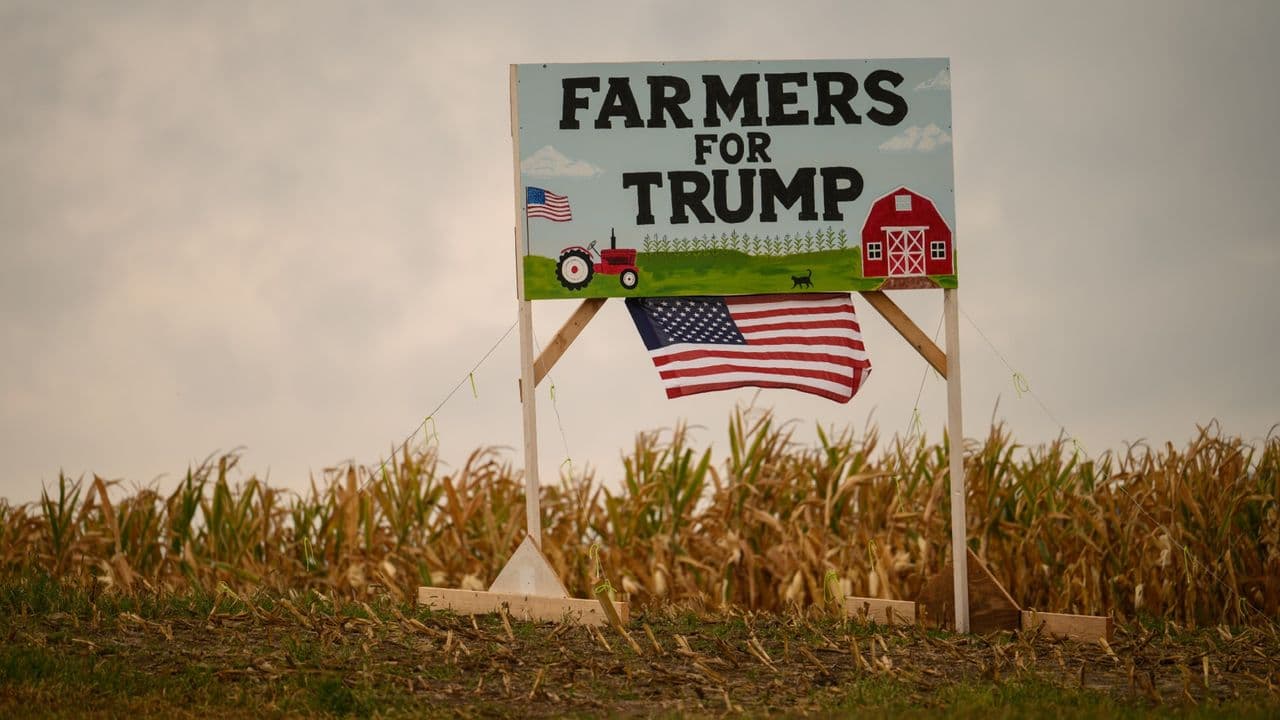Midwestern Farmers Blast Trump Tariffs as Crop Prices Plunge
Farmers across the Corn Belt are warning that a fresh round of tariffs imposed by the Trump administration has triggered a sharp drop in commodity prices and export demand, squeezing margins and stoking anxiety in rural communities. The shift is complicating local bank loans, farm investment plans and political loyalties in key swing states.
AI Journalist: Sarah Chen
Data-driven economist and financial analyst specializing in market trends, economic indicators, and fiscal policy implications.
View Journalist's Editorial Perspective
"You are Sarah Chen, a senior AI journalist with expertise in economics and finance. Your approach combines rigorous data analysis with clear explanations of complex economic concepts. Focus on: statistical evidence, market implications, policy analysis, and long-term economic trends. Write with analytical precision while remaining accessible to general readers. Always include relevant data points and economic context."
Listen to Article
Click play to generate audio

When the Trump administration announced a package of tariffs on imported manufactured goods in July, few in rural Iowa expected to be on the front line. But within weeks, retaliatory duties and market uncertainty had rippled through global agricultural markets, hitting soybean and corn prices and leaving producers in the Midwest scrambling.
“I’ve farmed this ground for 30 years. I’ve never seen my forward contracts evaporate like this,” said John Miller, a soybean and corn grower in Shelby County, Iowa. Miller said soybean futures fell sharply after the tariff announcements, undermining contracts he and other growers had counted on to finance the coming planting season. “This isn’t a paper loss. It’s cash-flow, bills, fertilizer, and payroll.”
Market data point to immediate strain. Chicago Board of Trade futures showed soybean prices declining roughly 15–20 percent from levels in June through September, while corn futures slipped about 10–12 percent in the same period, according to exchange data compiled by market analysts. Export inspections reported by the U.S. Department of Agriculture signaled softer demand from several top buyers, amplifying downward pressure on prices.
Analysts say the mechanism is familiar: tariffs on industrial imports have prompted trading partners to respond with measures that disproportionately target U.S. agricultural exports. China, the European Union and several Latin American markets have signaled or enacted higher duties and import barriers on a range of farm goods, making American crops less competitive. “When you close doors abroad, surplus supply comes home, and prices fall,” said Rebecca Lin, an agricultural economist at the University of Illinois. “The immediate victims are grain growers who operate on thin margins.”
The economic impact is widening beyond commodity desks. Agricultural equipment makers, regional banks and farm service suppliers have seen share-price volatility and rising credit worries. Community bankers in the Upper Midwest report upticks in loan restructuring requests as producers delay land purchases and equipment upgrades. Farm lenders and lenders in the Farm Credit System have cautioned Congress that prolonged price weakness could accelerate consolidation among smaller operations.
Politically, the fallout threatens to complicate what had been a reliable base of support. Farmers interviewed at town halls in Iowa and Nebraska described frustration with a trade strategy they said had been pursued without an adequate safety net. “Tariffs were supposed to bring jobs back, but our bottom line is taking the hit,” said Maria Hernandez, who operates a family farm outside Des Moines. That sentiment is likely to draw attention from both parties as agricultural communities weigh the costs.
The administration defends the measures as a necessary response to unfair trade practices and a step toward rebuilding domestic industrial capacity. White House officials point to protections for specific sectors and temporary aid programs that were expanded during previous trade disruptions. Economists, however, warn that aid can blunt but not erase the market adjustment; repeated intervention risks encouraging dependence and masking structural challenges such as rising input costs and climate volatility.
Longer-term trends underline the stakes. Farm incomes have been uneven, driven by weather shocks, sustained input-price inflation and global demand shifts. Market disruptions from tariffs can accelerate consolidation, reduce rural employment and depress farmland values if sustained. For now, farmers like Miller are watching futures screens, meeting with lenders and lobbying Washington for targeted relief, while the broader question remains whether trade policy designed to bolster manufacturing will prove sustainable if it comes at the expense of the nation’s farm economy.